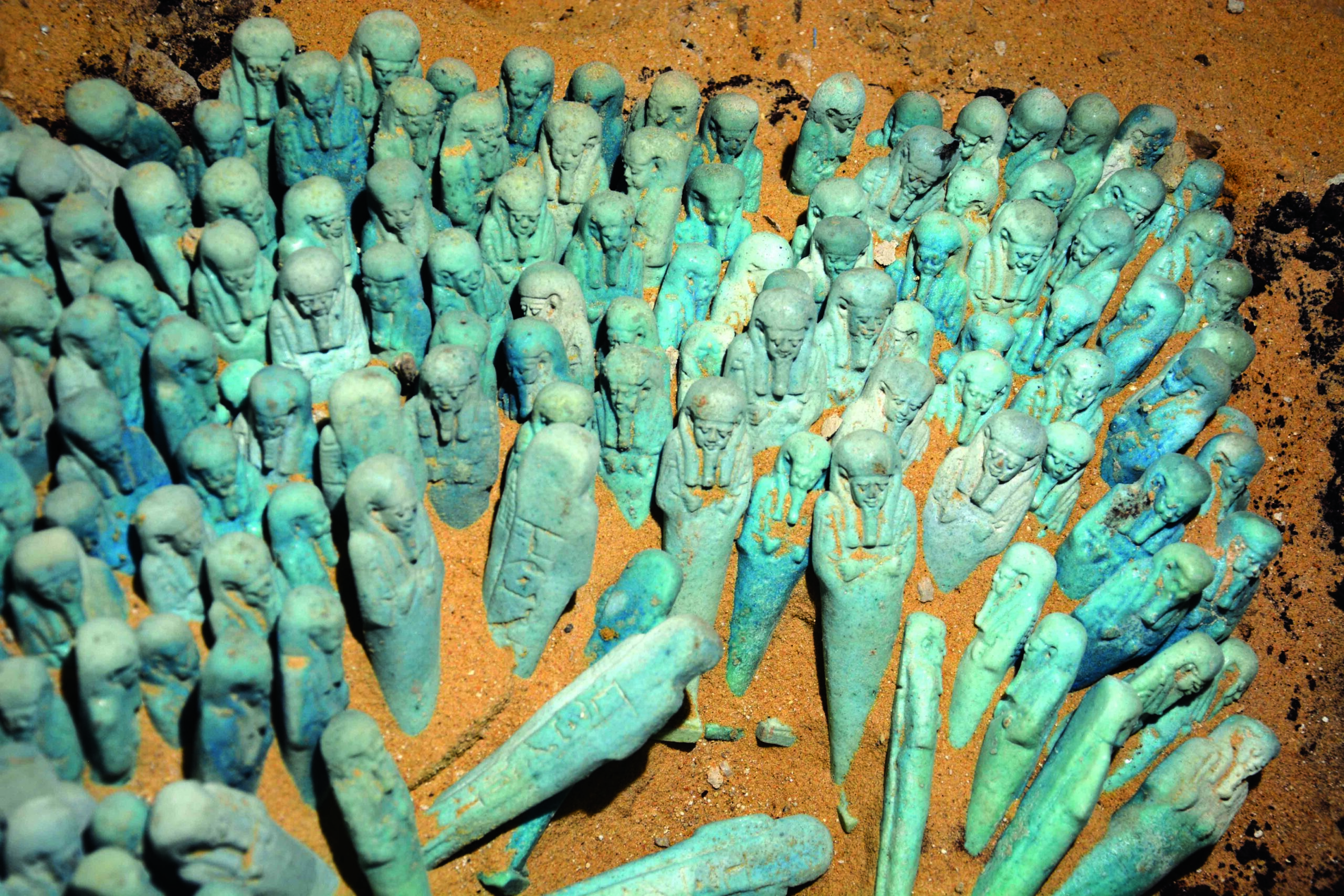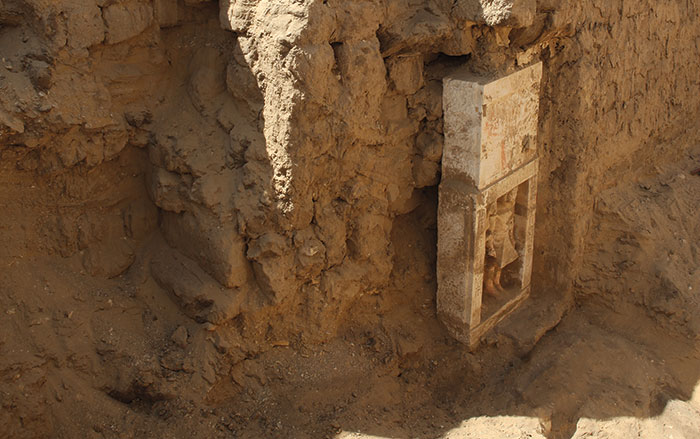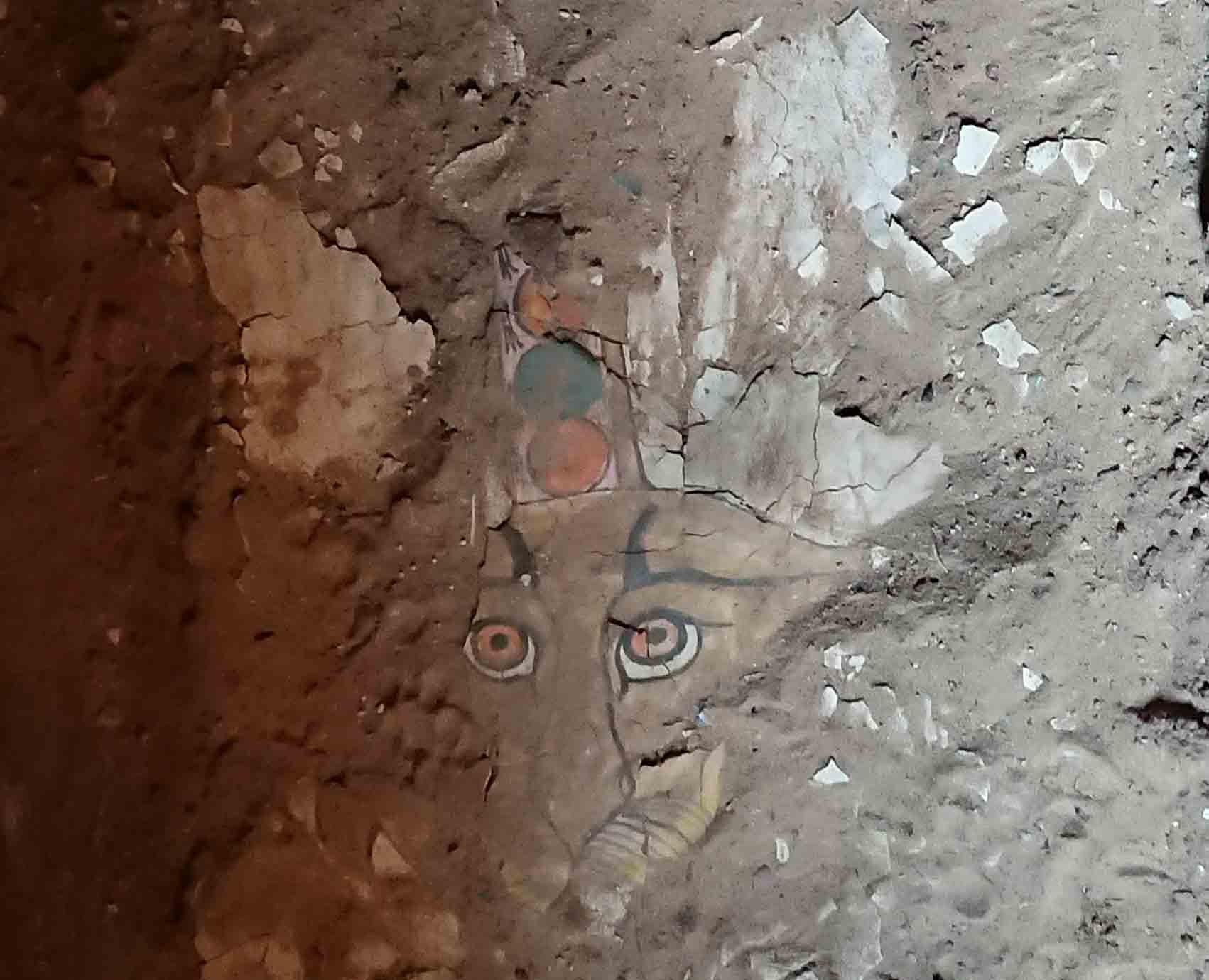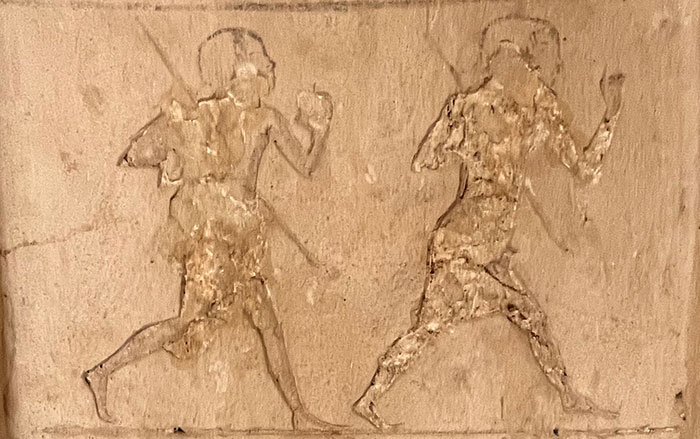
Mummification is among the best-known religious practices of the ancient Egyptians, yet apart from a few textual descriptions and tomb paintings, very little is known about the facilities where this process took place. That changed when archaeologists discovered a unique series of rooms dating to the Saite-Persian period of the mid-first millennium B.C. “The whole complex could be looked upon as a funeral home of sorts that provided the service of mummification along with burial compartments and equipment,” says Ramadan Hussein of the University of Tübingen. The facility includes a subterranean chamber at the bottom of a 40-foot-deep shaft that was used by embalmers. There, they laid bodies out on a rock-cut bed, drained them of fluids, and prepared them for burial. Hussein’s team also found ceramic vessels labeled with substances’ names and instructions for how each should be used in the mummification process. Just feet from the embalmer’s room, the team located a 100-foot-deep shaft that contained six different tombs holding 59 mummies.











